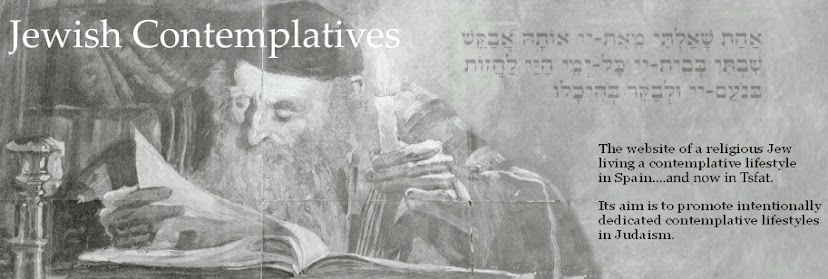The spiritual and the physical are not forces in opposition, they are facets of the same created reality. They may sometimes be in tension with each other but they are not engaged in some sort of dualistic battle to the death. When there is conflict between them, it is put there by Heaven in order that we should labour to produce unity in diversity.
I am writing this as we are approaching the Seventh and Eighth days of Pesach. This year the eighth day (Acharon Shel Pesach) coincides with Shabbos. What follows is a short reflection on the significance of the Chagim on our contemplative practice.
Each of the Jewish Festivals is an opportunity as well as a celebration. They are times when we are invited to focus on certain Divine and human middos and use our reflections and resulting personal deliberations to make progress in the spiritual journey. Of course, in the end, all our efforts to progress are in fact not our own work, but the activity of HaShem in our lives (by experiences sent to challenge or encourage us) and in our hearts (by inspiration to stimulate reflection and dialogue in hisbodedus). Because of this, to speak of “progress” is not to suggest that we are ascending (or descending) some sort of scale of achievement and reward. If we “ascend” we are merely complying with HaShem’s will, and the grace to do that will (ultimately) have come from Him and not from any effort of our own: We are simply being asked to see something which is already in existence, often hidden in the texts and rituals of each festival. This is not for our status or prestige but simply for our own information.
This information is not a question of academic study, nor is it a scientific or conceptual grasp of fact. It is a yichud which we are commanded to develop. It is an activity of daas and as such it is something which (at its most profound) is both experienced and expressed in relationships and in intimacy. This refers to both the human and the divine kind of intimacy, and the relationship/connection between them is expressed during the chagim by the key factors of (i)extended prayer and elaborated/specific rituals; (ii)family and community gatherings; and(iii) by the giving of charitable support to those in need. In this way we are reminded of the inter-related connections between the Divine, the Individual, the Community, and All Creation.
We were rescued from slavery and we crossed the parted sea in order to experience freedom. But this freedom was not simply a physical release from laborious servitude: it was freedom that we might worship our God and that we might become His People in the covenantal bond of Sinai. As the Festival of Pesach progresses, the call towards personal intimacy is heard more and more deeply. One of the usual Torah readings for Shabbos Chol Ha Moed Pesach (Exodus 33:12-34:26) concerns the revelation of the Thirteen Attributes to Moses in the cleft of the rock—one of Judaism’s most enlightening and yet utterly mysterious accounts of the mystical experience. Also, the special scripture apportioned for reading during Pesach is Shir HaShirim (The Song of Songs)—another mysterious text with profoundly hidden significance which simultaneously celebrates the daas knowledge-relationship of the individual with HaShem, and the sanctity of intimate human sexual interaction.
The “Thirteen Attributes” are a revelation of Divine activity but they also stand as pointers to the way in which we ourselves might imitate the Divine in our “physical” practice of the virtues proclaimed therein (see Rabbi Moshe Cordovero’s Tomer Devorah for a practical guide on how to do this.) The “Song of Songs” celebrates the beauty of married love, yet also points to a spiritual zivug relationship which is active across the Divine Worlds. These two paradigms (the Cleft of the Rock and the Song of Songs) demonstrate how the physical and the spiritual are intertwined and, by expansion, they serve to highlight the two kinds of religious practice (material and spiritual) in which we are all invited to “make progress” during the Festivals. In other words, during the Festivals we are encouraged to deepen our contact with our God, and we are also exhorted to make that spiritual activity flower into tangible acts of human compassion and charity.
The Festivals are not so much a recurring celebration of past events as new events along a learning spiral. Each “event” points to the (eternally present) future we call Olam HaBa. This Spiral is, as it were, coiled around a central beam which is the Light/Presence of HaShem in our world. As we ascend we are asked, as it were, to pay close attention to those we meet on the ascending spiral-path while ever “holding on” to that central and stabilising axis.
The Festivals are given to us as signs—as “signposts” indicating a pathway–or pathways. As the Festival of Pesach comes to its reflective and contemplative conclusion this Shabbos—May we progress/ascend in both the deveykus of our interaction with HaShem, and in our compassion and justice towards all those we encounter in the world. May our souls and our bodies, our prayers and our deeds, be reflections of the Divine unity.
Norman R Davies
April 12 2012
.

